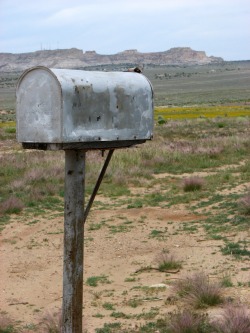Navajo Poetry
Is Navajo poetry unique from poetry within the United States? or from other tribes?
Yes.
Most Navajo writers I know use a playfulness of syntax, sound, and arrangement to stylize their writing according to their Navajoness. There are many ways to describe identity and for this purpose, I am basically saying that an interplay exists between Navajo and Diné - and the manifestation of the existence is the poetics.
There are numerous Diné poets/writers. The genre used to describe their writing typically fits into either poetry and/or prose. Many of them interchange literary forms in their writing. Some of them incorporate Diné bizaad into their writing.
Recently, a linguistic anthropologist began exploring Navajo poetry through a linguistical lens. He uses ethnographic and linguistic devices to acknowledge language usage of Navajo writers – culturally and linguistically which can offer a more accurate focus of study as both of those arenas allow for change. The Navajo culture and language are both changing and the vibrancy of the People can be woven into language usage, poetics. Reading and studying Navajo poetry with this approach feels more equitable than a pure literary stance. What I mean is that understanding what and how Navajo people write about (and how they use the English language) is far more useful than analyzing their use of the English language and/or established (non-Navajo) poetic devices (which generally means that one is looking at Navajo poetry in comparison rather than its own genre). Navajo poets are also intentionally grappling with English language structure - embracing English as a Navajo dialect. When Navajo people write using the English language a recovery from a deep and wide fracture is inherent - a consciousness - intentional whether playful, narrative or abstract. Often times, literary analysis hovers in the fracture – and possibly creates more of an abyss. When one thinks about indigenous survival/existence - it is fractured - that does not seems unusual considering our history of intergenerational trauma. Perhaps our writing is the new paradigm.
Poetry written in the English language has a tradition of embracing cultural devices from the region where English is spoken. Examples of this are: ballad, elegy, or epic. How Navajos embrace cultural devices, combine it with their own Navajoness and their own conscious interplay with poetic devices is the distinct genre of Navajo Poetry. A well-known master Diné poet, Luci Tapahonso, intentionally uses the sestina form in her work. She has commented that she enjoys using fixed forms which is reminiscent of ceremonies and prayers.
So should Navajo poetry be studied via literary devices? It really depends on the purpose. Since this has been the main method of study, it could also be the main reason Navajo poetry is not considered part of the American poetry canon. (The term “American” really bothers me but I am using it with italics to note that it is not the most appropriate word but is useful to describe what I mean). Navajo poetry (and poetry by other ethnic minorities) generally falls into a subset – African American poetry, Chicano poetry, Asian American poetry, Native American poetry. For many reasons, we are not typically classified solely as American poets.
Does it bother me? Yes it does, primarily because creating a subset category implies a disqualification from the canon – that writing from people of color lack certain qualities.
But many things bother me. I like that more writers are writing from their place of home - creating a common place of home. That makes me happy. That makes me write.
Get in touch
 Hello! I would love to hear from you about my artwork and writing. Feel free to send a comment or question using this form. Thank you, Esther.
Hello! I would love to hear from you about my artwork and writing. Feel free to send a comment or question using this form. Thank you, Esther.